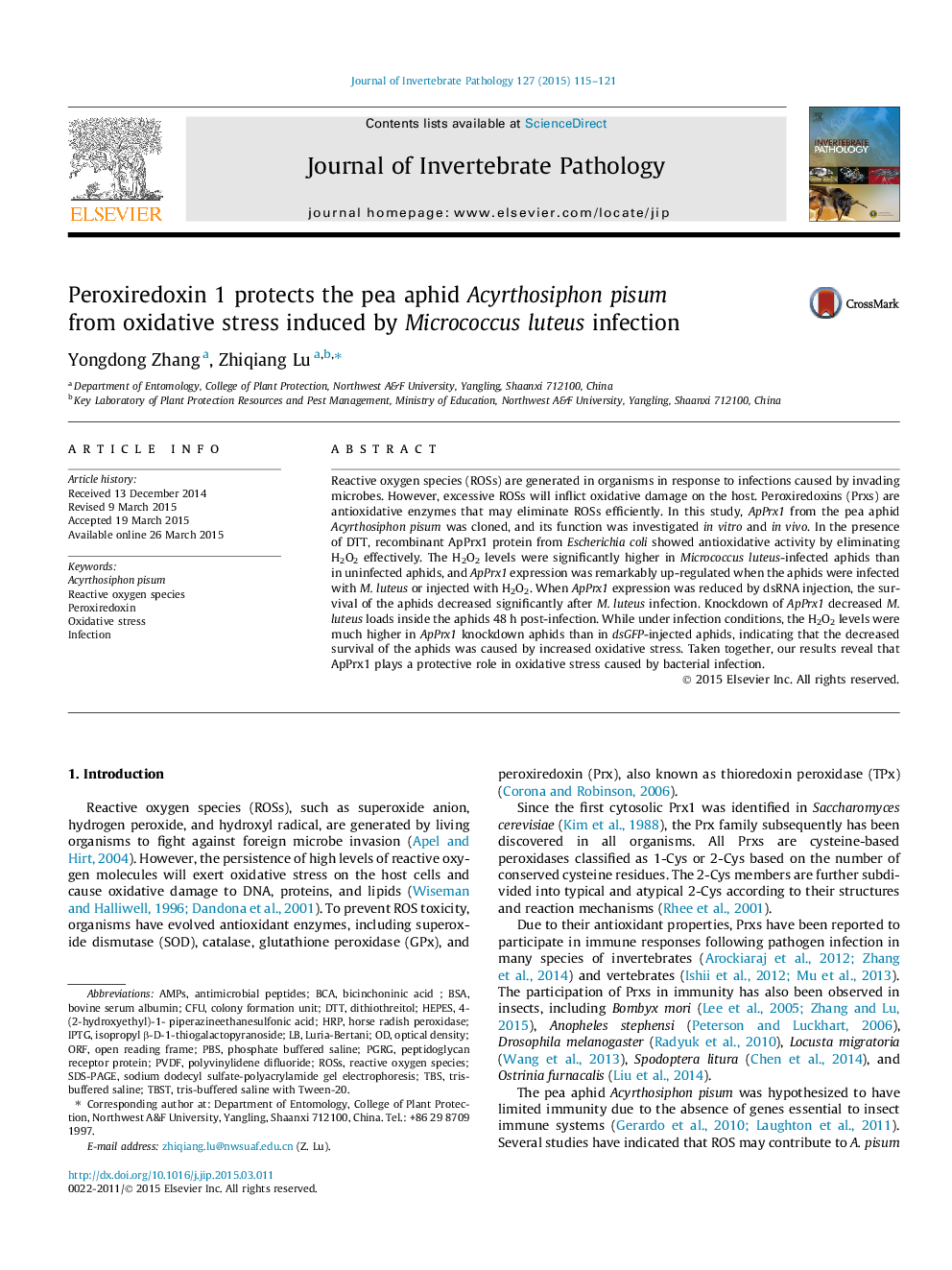| کد مقاله | کد نشریه | سال انتشار | مقاله انگلیسی | نسخه تمام متن |
|---|---|---|---|---|
| 4557647 | 1628225 | 2015 | 7 صفحه PDF | دانلود رایگان |

• Micrococcus luteus infection induced H2O2 production in pea aphids.
• Peroxiredoxin 1 expression was up-regulated by H2O2 and M. luteus infection.
• Recombinant Peroxiredoxin 1 is capable of eliminating excess H2O2.
• M. luteus infection triggered H2O2 production not only kills bacterium, but is also detrimental to aphids.
• Peroxiredoxin 1 protects pea aphids from oxidative stress resulted from M. luteus infection.
Reactive oxygen species (ROSs) are generated in organisms in response to infections caused by invading microbes. However, excessive ROSs will inflict oxidative damage on the host. Peroxiredoxins (Prxs) are antioxidative enzymes that may eliminate ROSs efficiently. In this study, ApPrx1 from the pea aphid Acyrthosiphon pisum was cloned, and its function was investigated in vitro and in vivo. In the presence of DTT, recombinant ApPrx1 protein from Escherichia coli showed antioxidative activity by eliminating H2O2 effectively. The H2O2 levels were significantly higher in Micrococcus luteus-infected aphids than in uninfected aphids, and ApPrx1 expression was remarkably up-regulated when the aphids were infected with M. luteus or injected with H2O2. When ApPrx1 expression was reduced by dsRNA injection, the survival of the aphids decreased significantly after M. luteus infection. Knockdown of ApPrx1 decreased M. luteus loads inside the aphids 48 h post-infection. While under infection conditions, the H2O2 levels were much higher in ApPrx1 knockdown aphids than in dsGFP-injected aphids, indicating that the decreased survival of the aphids was caused by increased oxidative stress. Taken together, our results reveal that ApPrx1 plays a protective role in oxidative stress caused by bacterial infection.
Figure optionsDownload as PowerPoint slide
Journal: Journal of Invertebrate Pathology - Volume 127, May 2015, Pages 115–121